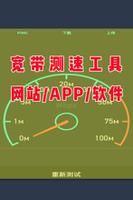TensorFlow中如何确定张量的形状实例
我们可以使用tf.shape()获取某张量的形状张量。
import tensorflow as tf
x = tf.reshape(tf.range(1000), [10, 10, 10])
sess = tf.Session()
sess.run(tf.shape(x))
Out[1]: array([10, 10, 10])
我们可以使用tf.shape()在计算图中确定改变张量的形状。
high = tf.shape(x)[0] // 2
width = tf.shape(x)[1] * 2
x_reshape = tf.reshape(x, [high, width, -1])
sess.run(tf.shape(x_reshape))
Out: array([ 5, 20, 10])
我们可以使用tf.shape_n()在计算图中得到若干个张量的形状。
y = tf.reshape(tf.range(504), [7,8,9])
sess.run(tf.shape_n([x, y]))
Out: [array([10, 10, 10]), array([7, 8, 9])]
我们可以使用tf.size()获取张量的元素个数。
sess.run([tf.size(x), tf.size(y)])
Out: [1000, 504]
tensor.get_shape()或者tensor.shape是无法在计算图中用于确定张量的形状。
In [20]: x.get_shape()
Out[20]: TensorShape([Dimension(10), Dimension(10), Dimension(10)])
In [21]: x.get_shape()[0]
Out[21]: Dimension(10)
In [22]: type(x.get_shape()[0])
Out[22]: tensorflow.python.framework.tensor_shape.Dimension
In [23]: x.get_shape()
Out[23]: TensorShape([Dimension(10), Dimension(10), Dimension(10)])
In [24]: sess.run(x.get_shape())
---------------------------------------------------------------------------
TypeError Traceback (most recent call last)
~\Anaconda3\lib\site-packages\tensorflow\python\client\session.py in __init__(self, fetches, contraction_fn)
299 self._unique_fetches.append(ops.get_default_graph().as_graph_element(
--> 300 fetch, allow_tensor=True, allow_operation=True))
301 except TypeError as e:
~\Anaconda3\lib\site-packages\tensorflow\python\framework\ops.py in as_graph_element(self, obj, allow_tensor, allow_operation)
3477 with self._lock:
-> 3478 return self._as_graph_element_locked(obj, allow_tensor, allow_operation)
3479
~\Anaconda3\lib\site-packages\tensorflow\python\framework\ops.py in _as_graph_element_locked(self, obj, allow_tensor, allow_operation)
3566 raise TypeError("Can not convert a %s into a %s." % (type(obj).__name__,
-> 3567 types_str))
3568
TypeError: Can not convert a TensorShapeV1 into a Tensor or Operation.
During handling of the above exception, another exception occurred:
TypeError Traceback (most recent call last)
<ipython-input-24-de007c69e003> in <module>
----> 1 sess.run(x.get_shape())
~\Anaconda3\lib\site-packages\tensorflow\python\client\session.py in run(self, fetches, feed_dict, options, run_metadata)
927 try:
928 result = self._run(None, fetches, feed_dict, options_ptr,
--> 929 run_metadata_ptr)
930 if run_metadata:
931 proto_data = tf_session.TF_GetBuffer(run_metadata_ptr)
~\Anaconda3\lib\site-packages\tensorflow\python\client\session.py in _run(self, handle, fetches, feed_dict, options, run_metadata)
1135 # Create a fetch handler to take care of the structure of fetches.
1136 fetch_handler = _FetchHandler(
-> 1137 self._graph, fetches, feed_dict_tensor, feed_handles=feed_handles)
1138
1139 # Run request and get response.
~\Anaconda3\lib\site-packages\tensorflow\python\client\session.py in __init__(self, graph, fetches, feeds, feed_handles)
469 """
470 with graph.as_default():
--> 471 self._fetch_mapper = _FetchMapper.for_fetch(fetches)
472 self._fetches = []
473 self._targets = []
~\Anaconda3\lib\site-packages\tensorflow\python\client\session.py in for_fetch(fetch)
269 if isinstance(fetch, tensor_type):
270 fetches, contraction_fn = fetch_fn(fetch)
--> 271 return _ElementFetchMapper(fetches, contraction_fn)
272 # Did not find anything.
273 raise TypeError('Fetch argument %r has invalid type %r' % (fetch,
~\Anaconda3\lib\site-packages\tensorflow\python\client\session.py in __init__(self, fetches, contraction_fn)
302 raise TypeError('Fetch argument %r has invalid type %r, '
303 'must be a string or Tensor. (%s)' %
--> 304 (fetch, type(fetch), str(e)))
305 except ValueError as e:
306 raise ValueError('Fetch argument %r cannot be interpreted as a '
TypeError: Fetch argument TensorShape([Dimension(10), Dimension(10), Dimension(10)]) has invalid type <class 'tensorflow.python.framework.tensor_shape.TensorShapeV1'>, must be a string or Tensor. (Can not convert a TensorShapeV1 into a Tensor or Operation.)
我们可以使用tf.rank()来确定张量的秩。tf.rank()会返回一个代表张量秩的张量,可直接在计算图中使用。
In [25]: tf.rank(x)
Out[25]: <tf.Tensor 'Rank:0' shape=() dtype=int32>
In [26]: sess.run(tf.rank(x))
Out[26]: 3
补充知识:tensorflow循环改变tensor的值
使用tf.concat()实现4维tensor的循环赋值
alist=[[[[1,1,1],[2,2,2],[3,3,3]],[[4,4,4],[5,5,5],[6,6,6]]],[[[7,7,7],[8,8,8],[9,9,9]],[[10,10,10],[11,11,11],[12,12,12]]]] #2,2,3,3-n,c,h,w
kenel=(np.asarray(alist)*2).tolist()
print(kenel)
inputs=tf.constant(alist,dtype=tf.float32)
kenel=tf.constant(kenel,dtype=tf.float32)
inputs=tf.transpose(inputs,[0,2,3,1]) #n,h,w,c
kenel=tf.transpose(kenel,[0,2,3,1]) #n,h,w,c
uints=inputs.get_shape()
h=int(uints[1])
w=int(uints[2])
encoder_output=[]
for b in range(int(uints[0])):
encoder_output_c=[]
for c in range(int(uints[-1])):
one_channel_in = inputs[b, :, :, c]
one_channel_in = tf.reshape(one_channel_in, [1, h, w, 1])
one_channel_kernel = kenel[b, :, :, c]
one_channel_kernel = tf.reshape(one_channel_kernel, [h, w, 1, 1])
encoder_output_cc = tf.nn.conv2d(input=one_channel_in, filter=one_channel_kernel, strides=[1, 1, 1, 1], padding="SAME")
if c==0:
encoder_output_c=encoder_output_cc
else:
encoder_output_c=tf.concat([encoder_output_c,encoder_output_cc],axis=3)
if b==0:
encoder_output=encoder_output_c
else:
encoder_output = tf.concat([encoder_output, encoder_output_c], axis=0)
with tf.Session() as sess:
print(sess.run(tf.transpose(encoder_output,[0,3,1,2])))
print(encoder_output.get_shape())
输出:
[[[[ 32. 48. 32.]
[ 56. 84. 56.]
[ 32. 48. 32.]]
[[ 200. 300. 200.]
[ 308. 462. 308.]
[ 200. 300. 200.]]]
[[[ 512. 768. 512.]
[ 776. 1164. 776.]
[ 512. 768. 512.]]
[[ 968. 1452. 968.]
[1460. 2190. 1460.]
[ 968. 1452. 968.]]]]
(2, 3, 3, 2)
以上这篇TensorFlow中如何确定张量的形状实例就是小编分享给大家的全部内容了,希望能给大家一个参考,也希望大家多多支持。
以上是 TensorFlow中如何确定张量的形状实例 的全部内容, 来源链接: utcz.com/z/347790.html





